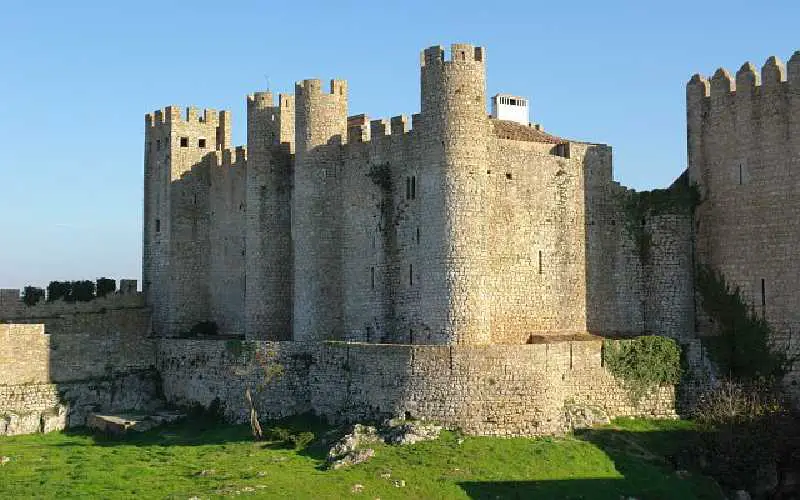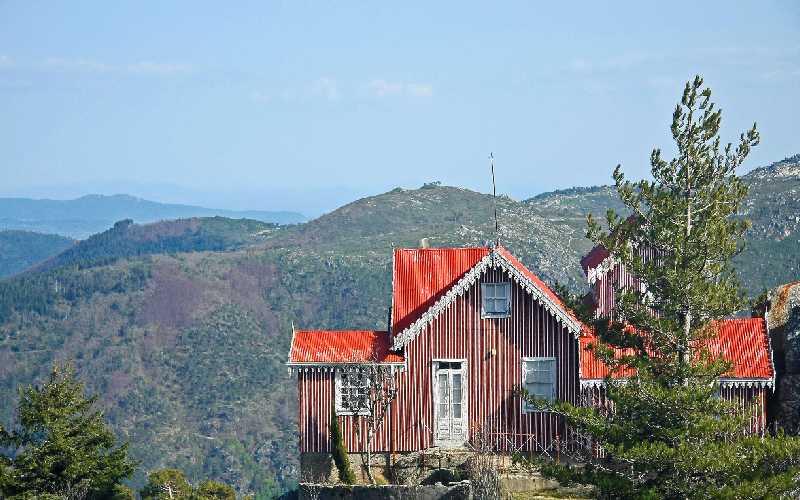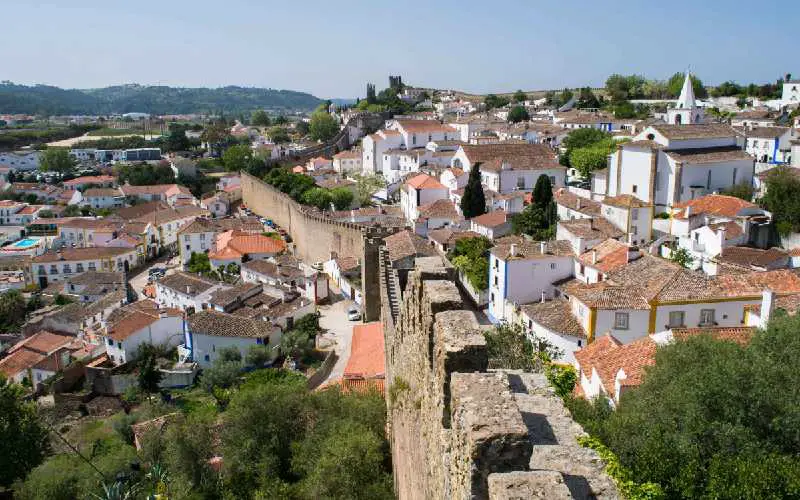Obidos is a popular tourist town in central Portugal, in the district of Leiria. It has a population of approximately 6,000 inhabitants and is located near the Serra da Estrela (Serra da Estrela) mountain range and the district capital, Penamacor. It is one of the prettiest places in Portugal and I highly recommend a day trip or even a weekend there. Today’s blog is all about the best things to do in Obidos.
Introducing Obidos – A Picturesque Medieval Portuguese Town
Obidos is a popular tourist town down to it’s picturesque old town and numerous archeological monuments with various styles from the Middle Ages. The town of Obidos follows the traditional medieval Portuguese town plan – a castle on a hill with the town surrounded by castle walls, a main square with a Church or Cathedral and an aqueduct to bring water into the city.
How long do I need to Spend in Obidos?
It is possible to do Obidos as a day trip from Lisbon either by train (around 1 hour 40 mins from Sete Rios) or car (around an hour and a half). A car is challenging with the parking but will give you more freedom once you are there to see things on the outskirts. A day will be enough to see the main town including the castle, Church, main streets and the Roman Aqueduct.
You can book a day trip to Obidos from Lisbon with a private driver, and many of these tours often also show you another destination such as Nazare, Fatima or Peniche in the same day. The downside is that these can be a little rushed, but the positive aspect of getting one of these tours is that your guide will have more knowledge of the local history. I recommend booking in advance with Get your Guide or Viator travel.
If you want to fully experience the charm of Obidos and enjoy some of the surrounding attractions though, it is definitely worth spending a weekend in Obidos.
Where to Stay in Obidos
We stayed overnight at the Raina Santa Isobel – Obidos History Hotel and it was beautiful. The hotel has a medieval theme with wooden beams in the rooms and the rooms are named after past Portuguese Kings and Queens!
For an even more authentic medieval experience you can actually choose to stay in the castle. Another option for staying overnight is to stay in the Casa do Castelo (right next to the castle).
Things to do in Obidos in 1 Day
Castelo de Obidos

The Castelo d’Obidos is the medieval castle in Obidos – it is the first thing that you will see if you are arriving by train, and it’s the best place to start exploring the town. It is believed that a castle structure has been on this site since Roman times (1st Century AD), which was then conquered by the Lusitanos (4th Century) and then the Muslim in the 5th and 6th Century who fortified the town in the 8th Century. The areas was then taken from the Moors by the first King of Portugal, Afonso Henriques, in 1148.
The castle itself was given by King D. Dinis to Queen Santa Isabel as a wedding present during their wedding that took place on the castle site. It is one of the 7 wonders of Portugal. It’s free to go inside the castle grounds and walk the castle walls.
St Mary’s Square
Walking down from the castle along Rua Dereita main street, you will come to St Mary’s square, with the most prominent and beautiful Church in Obidos – Saint Mary’s Church. It is a combination of Renaissance, Manerist and Baroque architecture.
Also in Saint Mary’s square you will see the Pillory (a National monument since 1910), Saint Mary’s fountain, the village market porch, Aboins Manor house, Brito Pegado Manor house and the Town Hall (now a Museum). In this area you will often find buskers playing traditional Medieval instruments to add to the historical feel. Try to tip them if you watch them or take their photograph if you can afford to do so.
The Picturesque Streets of Obidos
You should then spend some time soaking up the atmosphere and enjoying the streets of Obidos. The white and yellow houses are extremely picturesque. It is a great place to try traditional Portuguese food and shop for souvenirs. You will find many shops selling traditional Portuguese products such as Olive dishes, fans and cork book marks.
Try Ginja in a Chocolate Cup!
While you are in Obidos you should definitely find time to try Ginja – a traditional Portuguese spirit that comes from Obidos and is usually served in a little chocolate cup!
Porta da Vila
Porta Vila is the beautiful town gate to enter Obidos. This main point of entry into the village was put by King Dom João IV, in appreciation of the Patron Saint Nossa Senhora da Piedade. The way that the two gateways are designed was a military tactic to prevent a cavalry charge into the town. Inside the gate is a beautifully decorated Oratory (small chapel to congregate) that depicts the passion of Christ through blue and white Portuguese tiles from the 1740s.
Acueducto de Óbidos
As you exit Porta Vila, keep walking straight ahead and you will see the start of the Aqueduct. It’s one of the oldest aqueduct which dates back to 1570. It was Commissioned by Queen Catherine of Austria (the wife of King João III) in 1573, this aqueduct carried drinking water for the people of Óbidos. You can walk the full length of the aqueduct – the arches get smaller as you go further along. It’s an easy and leisurely walk that ends up in a pine forest.
Day 2 – Around Obidos
Bacalhôa Buddha Eden
Did you know that just 20 minutes outside of Obidos town centre you can find the largest Buddha park in Europe? This Buddha park was constructed by a millionaire – Comendador Jose Berardo, in response to the destruction of the Buddhas of Banyan. It’s a modern take on Asian Buddhism and includes Chinese Buddhas, Thai Buddhas, dragons, Boddhisattvas and even a reconstruction of the Terracotta Army of Xian in China (in blue!)
The entrance is just 5€ and you can pay an additional 4€ for the train that drives you around the park, which is relaxing and enjoyable. Aim to spend around 2-3 hours at least here. It is not well connected by public transport, but you can order taxis to Obidos and Bombarral Train station.
Serra d’Obidos
The Serra d’Obidos is a mountain range within the Serra do Caramulo, in northern Portugal. It is composed of numerous rocky peaks covered by laurisilva forest, especially on the north-facing slopes. The highest point in this range is the Cabeça Pão de Açúcar (English: Sugarloaf Peak), which rises to an elevation of . There are several medieval ruins in this mountain area, including an abandoned chapel with an altar dating from 1540.
Cachoeira das Furnas
The Cachoeira das Furnas is a waterfall within the Serra do Caramulo mountains, in northern Portugal. It is situated within an area of primary forest, ancient forest and laurisilva vegetation, making it an important nature reserve. This area is conserved and managed by the Instituto da Conservação da Natureza e das Florestas (ICNF) as part of the “Parque Natural da Serra do Caramulo”. The waterfall itself is high and cascades into a gorge running between two rocky cliffs. The surrounding area has been designated a protected landscape since 1989.
Azulejaria
Azulejaria is an archaeological site in the civil parish of Obidos (São Pedro), municipality of Obidos, in the central subregion of District of Leiria, Portugal. This location was inhabited in prehistoric times, and later became fortified by Celtic tribes. The area acquired its name from a type of ceramic (azulejo) that was produced and exported to places like Rome. The proximity to the Tagus River and the region’s strategic position, allowed it to be occupied until modern times. It was in this region that several battles were fought, including the Battle of Ourique, where Afonso Henriques established the Portuguese Kingdom.
Penhas Douradas

Penhas Douradas is a civil parish (freguesia) of the municipality of Obidos, district of Leiria. The population in 2011 was 304, in an area of 18.88 km². It includes several settlements and localities such as: Arrais do Rei (Arais do Rei), Vale de Água (Vale d’Agua) and Fonte da Figueira (Fontes da Figueira). The name Penhas Douradas is derived from the abundant pine forests that once covered the region.
If you enjoyed todays blog on things to do in Obidos, you might also like to read about things to do in Cascais.



2 thoughts on “Things to do in Obidos”